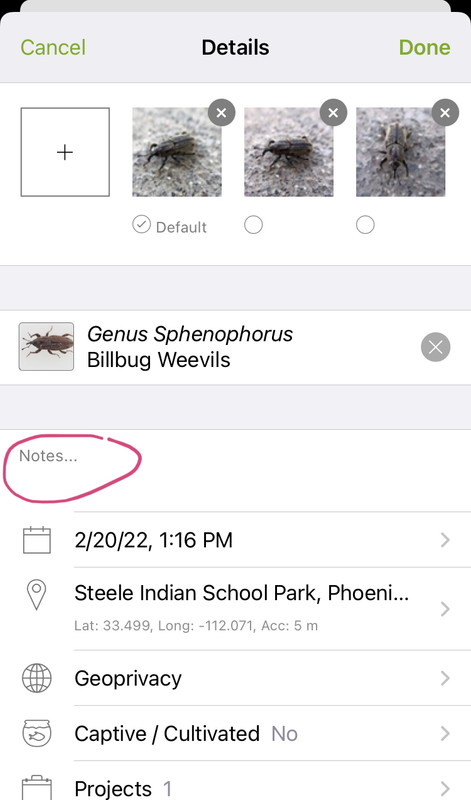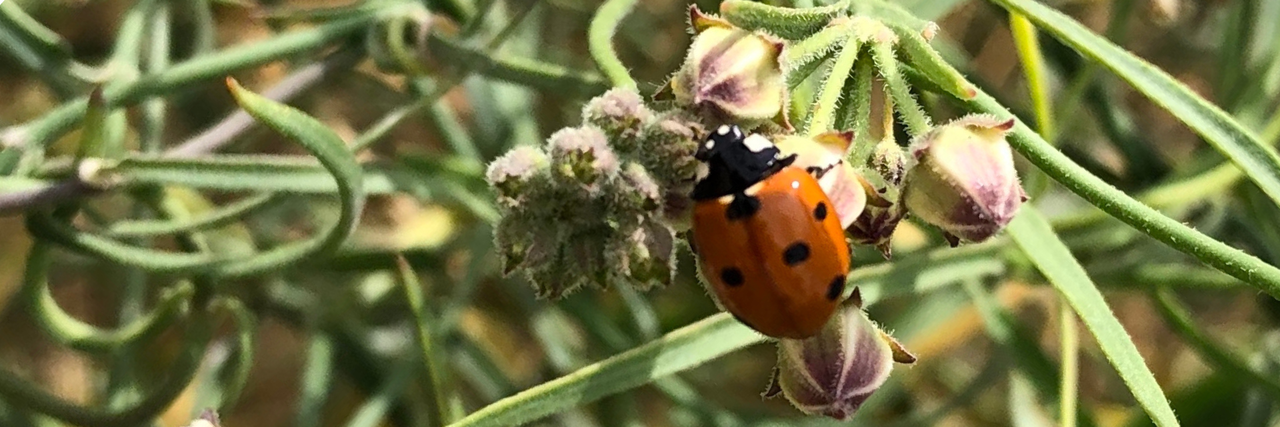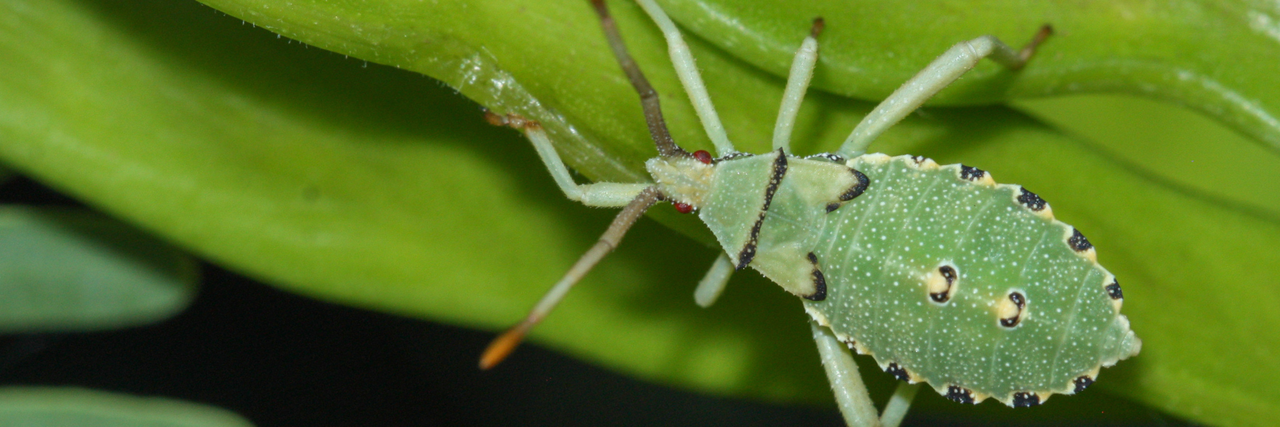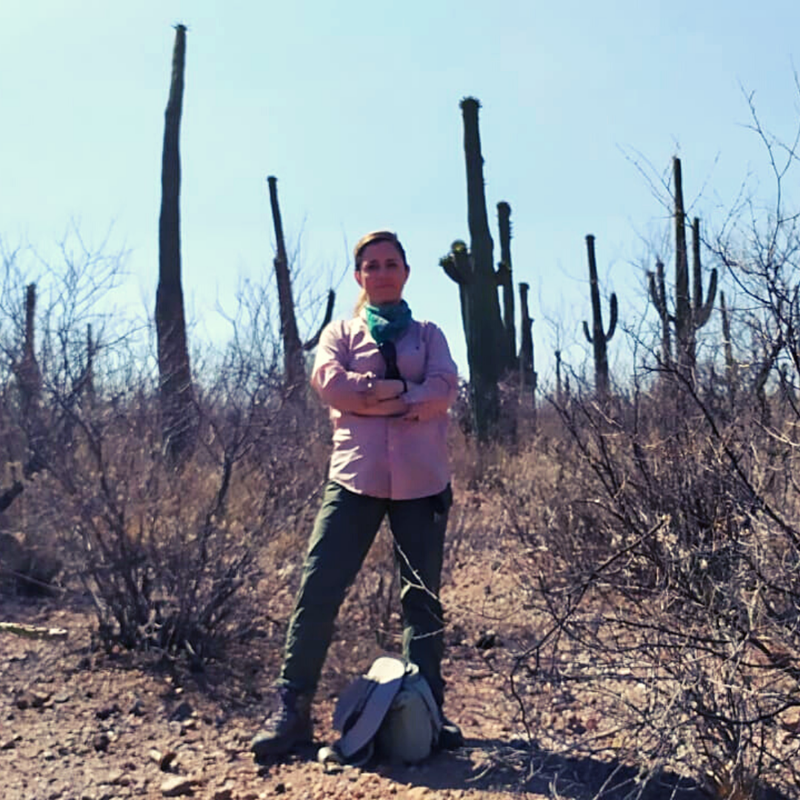Join the June EcoQuest: Unfamiliar Pollinators.
Find and map as many lesser-known insect pollinators as possible.
Join the EcoQuest
See the Guide
WHAT TO OBSERVE:
Any and all examples of the lesser-known insect pollinators such as native bees, wasps, flies, beetles and true bugs and the host or nectar plants on which you might find them.


This month’s EcoQuest is in collaboration with Jordan Glass and Meredith Johnson, Biology PhD candidates at Arizona State University.
Jordan Glass studies environmental physiology, specifically how insects function, interact with, and evolve to deal with environmental stressors, working in the lab of Dr. Jon F. Harrison. His thesis research focuses on the environmental physiology of honey bee flight, in particular how these important pollinators respond to temperature variation and agrochemicals that have been implicated in pollinator decline.
Meredith Johnson specializes in the thermal physiology and water balance of flying bees. In particular, she is passionate about conserving and understanding the solitary desert bees in her favorite genus - Centris. When Meredith is not collecting data in the Sonoran Desert, she can be found climbing in the McDowell mountains, identifying desert plants, or working on one of her insect illustrations.
You can contribute to our understanding of plant-insect relationships by noting which plant(s) these insects are visiting. Use the “Associated Species” or “Associated Observation” field (on the website) to add this information, or type it in the Notes section (on the app).


When it comes to pollinators, honey bees and butterflies often appear in most people’s minds, but native bees, wasps, flies, beetles, and true bugs also play a critical role in pollination. Arizona alone has an estimated 1,300 native bees!
Below are examples of lesser-known insect pollinators that you might find working in your yard, patio garden, or local park. How many can you find in this month’s EcoQuest?
Be sure to check out the accompanying guide to help you identify what you’re seeing.
See the Guide

Bees that aren’t honeybees
- leafcutter and mason bees (Megachile and Osmia spp.)
- bumblebees (pictured above; Bombus and Psithyrus spp.)
- sweat bees (Agapostemon, Augochlorella, and Halictus spp.)
- mining bees (Andrena and Perdita spp.)
- long-horned bees (Melissodes, Svastra, and Synhalonia spp.)
- squash bees (Peponapis and Xenoglossa spp.)
- carpenter bees (Xylocopa spp.)
- yellow-faced bees (Hylaeus spp.)
- cuckoo bees (Nomada and Triepeolus spp.)
- digger bees (Centris spp.)
 Wasps
Wasps
- yellow paper wasps (
Mischocyttarus flavitarsis)
- western yellow jacket (
Vespula pensylvanica)
- Navajo paper wasp (
Mischocyttarus Navajo)
- mud daubers (
Scliphron caementarium)
- tarantula hawk (pictured above;
Pepsis sp.)
- cicada killers (
Sphecius grandis)
 Photo by @thegardenhound.
Flies
Photo by @thegardenhound.
Flies
- bee flies (pictured above;
Bombylius and
Systoechus spp.)
- hover flies (family Syrphidae)
- midges (family Ceratopogonidae)
- male mosquitos (family Culicidae)
- houseflies (family Muscidae)
- blowflies (family Calliphoridae)
- lovebugs (family Bibionidae)
- March flies (family Bibionidae)
- Crane fly (family Tipulidae)
 Beetles
Beetles
- blister beetles (family Meloidae)
- longhorned beetles (family Cerambycidae)
- scarabs (family Scarabaeidae)
- weevils (family Cuculionidae)
- ladybirds or ladybugs (pictured above; family Coccinellidae)
- fireflies (family Lampyridae)
- click beetles (family Elacteridae)
 Photo by @ameeds
Photo by @ameeds.
True bugs
- stink bugs (family Pentatomidae)
- wheel bugs, leaf-footed bugs (pictured above; family Coreidae)
- bordered plant bug (family Largidae)
- assassin bugs (family Reduviidae)
- planthopper (family Delphacidae)
Observing lesser-known insect pollinators can increase our knowledge, understanding and appreciation of pollinators and can contribute to observation, population, and distribution information. Observing the plants these insects are visiting can also help us better understand these plant-insect relationships.

Let's celebrate Pollinator Week, June 20-26!
Pollinator Week is an annual event celebrated internationally in support of pollinator health. This citizen science project is hosted annually by the North American Pollinator Protection Campaign's (NAPPC) Urban Pollinator Taskforce.
In addition to this month's EcoQuest, we encourage you to join the
Pollinator Week BioBlitz and make observations of any and all pollinators that you can find.
Sources and more information:
The A Bee Cs of Arizona’s Native Bees (Arizona-Sonora Desert Museum)
Pollen Specialist Bees of the Western United States (Jarrod Fowler)
Pollinator Partnership
The Pollinator Partnership and collaborators have created a helpful guide for identifying common bee species.
See it here.
Project member @thegardenhound has created
PollinatorWeb, and we encourage you to check it out!

EcoQuests are month-long challenges that are part of the larger Metro Phoenix EcoFlora project.
Learn more by visiting our website.
Look for project happenings, EcoQuest announcements and more in the newsletter, project journal and on social media.
Sign up for the newsletter, The Metro Phoenix Field Guide.
Let's be social on Instagram, Facebook, and Twitter.

Please do not observe indoor houseplants or pets.
For your own safety and the protection of plants and wildlife, do not trespass when making observations. Please follow all posted rules and guidelines in parks/preserves and do not enter private property.
Do not remove or move natural materials (plants, animals, rocks).
Respect wildlife (do not touch, feed, or disturb animals and keep a safe distance).
Observe COVID-19 Guidelines/Recommendations.
This is a great opportunity to observe and appreciate nature in our neighborhoods as we all navigate the complications of COVID-19. It is imperative that you follow COVID-19 guidelines/recommendations (wear a mask, practice physical distancing and wash your hands).
Do what’s best for you and your community.
For more COVID-19 information and guidelines, visit:
https://www.inaturalist.org/projects/city-nature-challenge-2020/journal/31768-cnc-covid-19
https://www.inaturalist.org/blog/31664-exploring-nature-when-you-re-stuck-at-home
Arizona Office of Tourism: Responsible Recreation in AZ
https://tourism.az.gov/responsible-recreation-across-arizona


















 Usá ArgentiNat con app iNaturalist
Usá ArgentiNat con app iNaturalist





